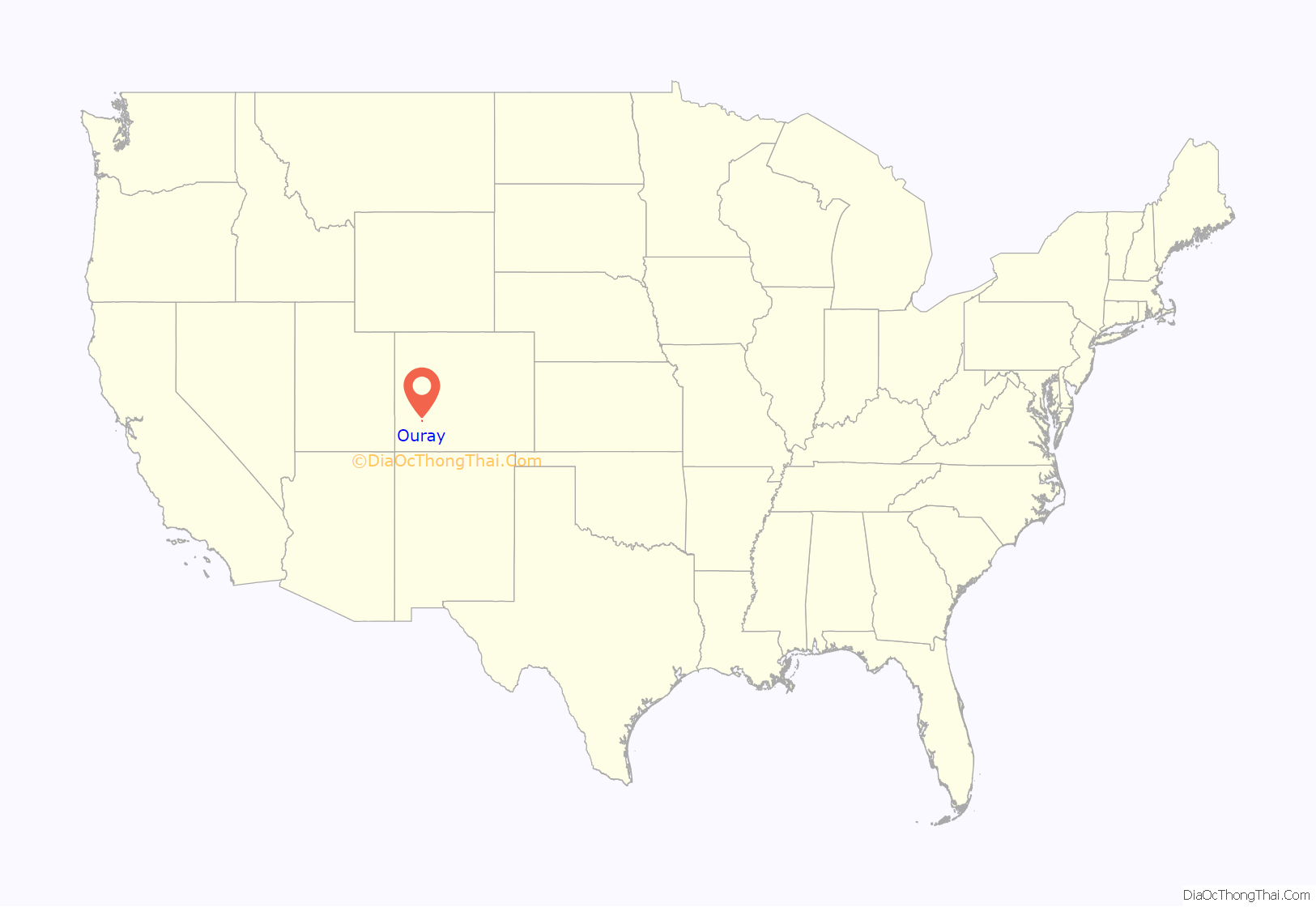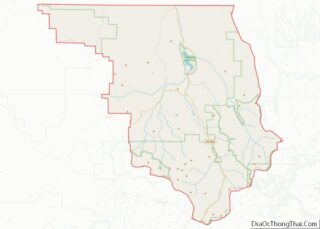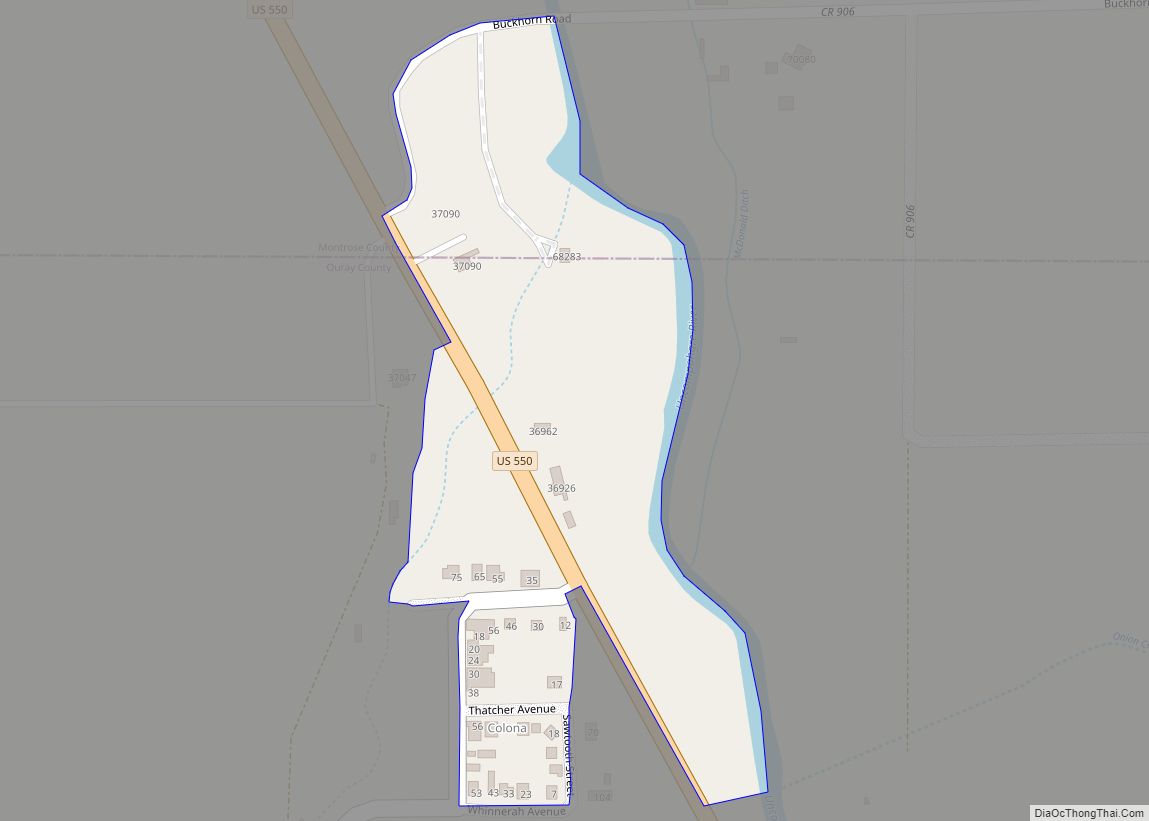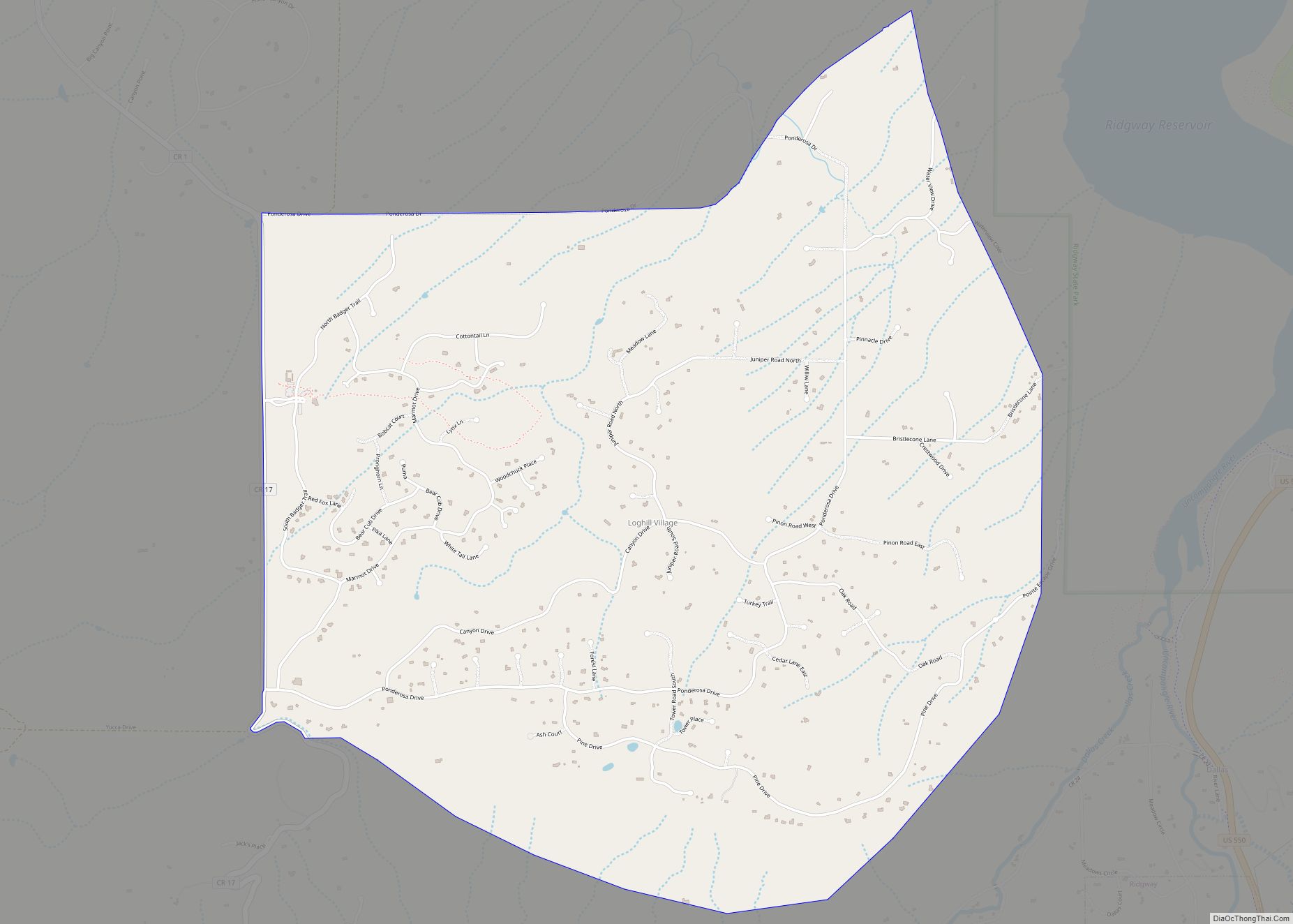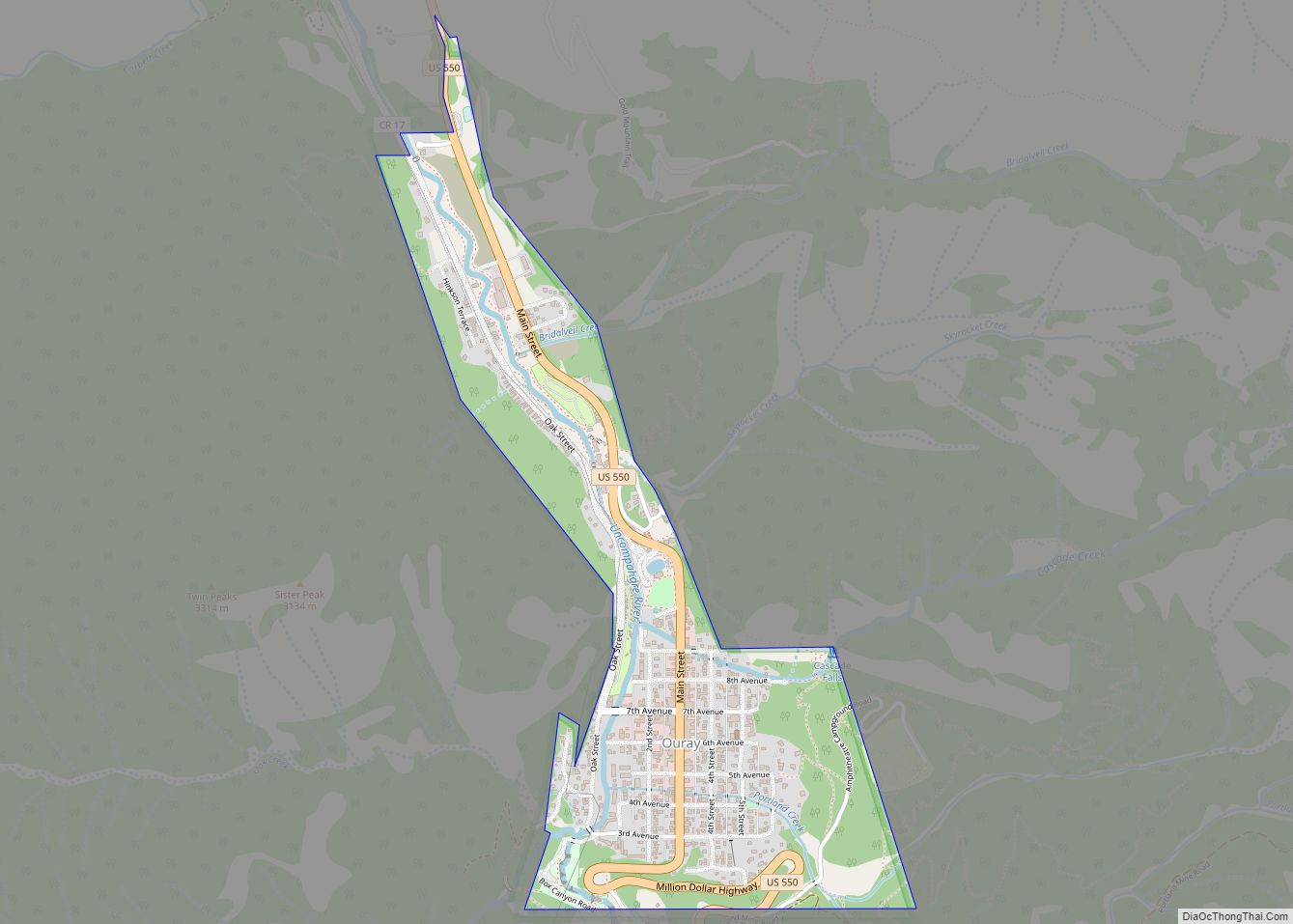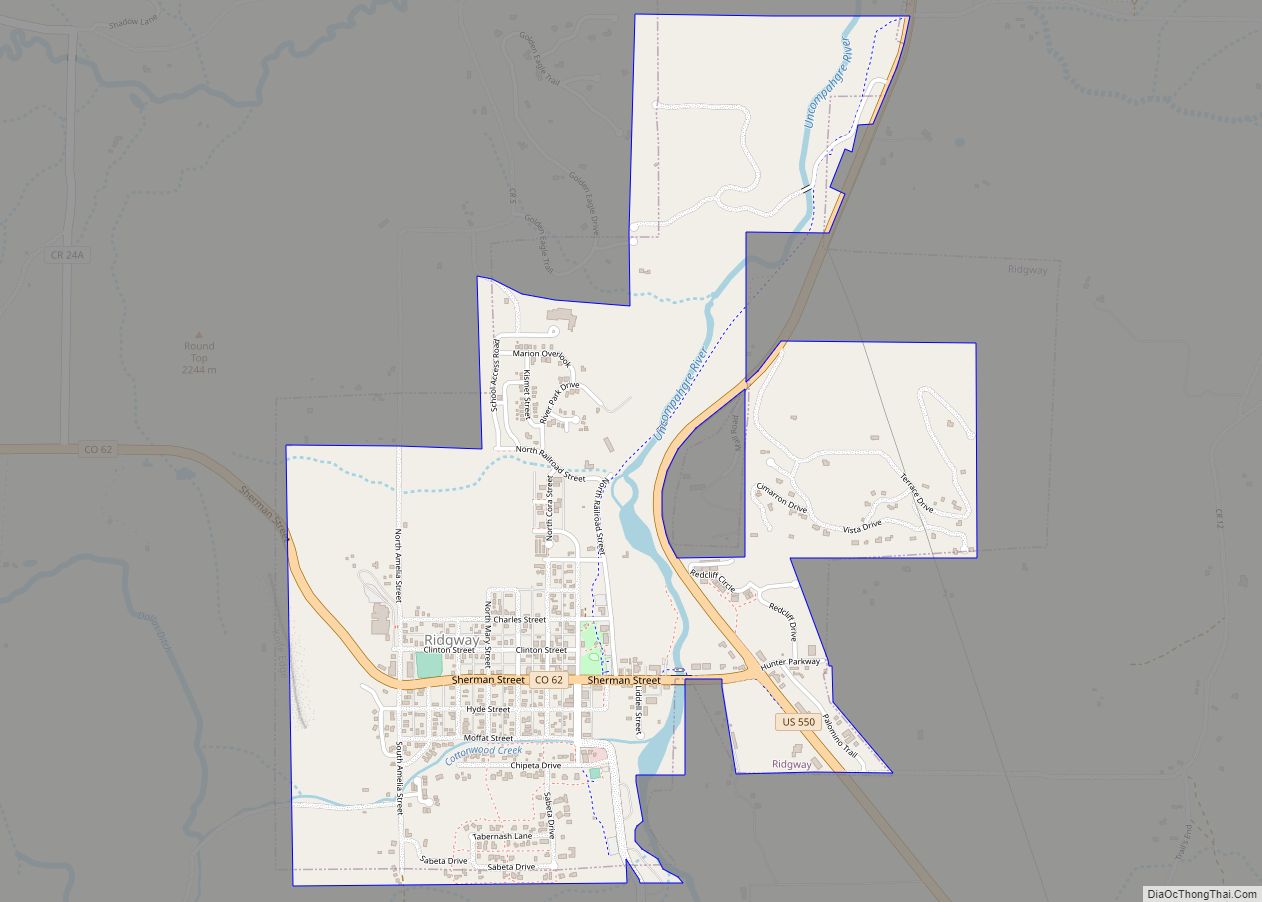Ouray (/ˈjʊəreɪ/) is a home rule municipality that is the county seat of Ouray County, Colorado, United States. The city population was 898 as of the 2020 census. The Ouray Post Office has the ZIP Code 81427. Located at an elevation of 7,792 feet (2,375 m), Ouray’s climate, natural alpine environment, and scenery have earned it the nickname “Switzerland of America”.
| Name: | Ouray city |
|---|---|
| LSAD Code: | 25 |
| LSAD Description: | city (suffix) |
| State: | Colorado |
| County: | Ouray County |
| Incorporated: | March 24, 1884 |
| Elevation: | 7,792 ft (2,375 m) |
| Total Area: | 0.86 sq mi (2.23 km²) |
| Land Area: | 0.86 sq mi (2.23 km²) |
| Water Area: | 0.00 sq mi (0.00 km²) |
| Total Population: | 898 |
| Population Density: | 1,000/sq mi (400/km²) |
| ZIP code: | 81427 (PO Box) |
| Area code: | 970 |
| FIPS code: | 0856420 |
| GNISfeature ID: | 0204753 |
| Website: | www.ci.ouray.co.us City of Ouray |
Online Interactive Map
Click on ![]() to view map in "full screen" mode.
to view map in "full screen" mode.
Ouray location map. Where is Ouray city?
History
Originally established by miners seeking silver and gold in the surrounding mountains, the town at one time boasted more horses and mules than people. Prospectors arrived in the area in 1875. In 1877, William Weston and George Barber found the Gertrude and Una gold veins in Imogene Basin, six miles south southwest of Ouray. Thomas Walsh acquired the two veins and all the open ground nearby. In 1897, Walsh opened the Camp Bird Mine, adding a twenty-stamp mill in 1898, and a forty-stamp mill in 1899. The mine produced almost 200,000 ounces of gold by 1902, when Walsh sold out to Camp Bird, Ltd. By 1916, Camp Bird, Ltd., had produced over one million ounces of gold.
At the height of the mining, Ouray had more than 30 active mines. The town—after changing its name and that of the county it was in several times—was incorporated on October 2, 1876, named after Chief Ouray of the Utes, a Native American tribe. By 1877 Ouray had grown to over 1,000 in population and was named county seat of the newly formed Ouray County on March 8, 1877.
The Denver & Rio Grande Railway arrived in Ouray on December 21, 1887. It would stay until the automobile and trucks caused a decline in traffic. The last regularly scheduled passenger train was September 14, 1930. The line between Ouray and Ridgway was abandoned on March 21, 1953.
In 1986, Bill Fries, a.k.a. C. W. McCall, was elected mayor, ultimately serving for six years.
The entirety of Main Street is registered as a National Historic District with most of the buildings dating from the late nineteenth century. The Beaumont Hotel and the Ouray City Hall and Walsh Library are listed on the National Register of Historic Places individually, while the Ouray County Courthouse, St. Elmo Hotel, St. Joseph’s Miners’ Hospital (currently housing the Ouray County Historical Society and Museum), Western Hotel, and Wright’s Opera House are included in the historic district.
Ouray Road Map
Ouray city Satellite Map
Geography
Ouray is located at 38°1′24″N 107°40′20″W / 38.02333°N 107.67222°W / 38.02333; -107.67222 (38.023217, −107.672178), in the San Juan Mountains of southwestern Colorado. It is about 40 miles (64 km) south of Montrose. It is only 10 miles (16 km) northeast of Telluride, but due to the severity of the landscape, the drive is about 50 miles (80 km). Ouray is connected to Silverton and then Durango to the south by Red Mountain Pass which crests at just over 11,000 feet (3,400 m). The drive along the Uncompahgre River and over the pass is nicknamed the “Million Dollar Highway”, although the exact origin of the name is disputed. Yankee Boy Basin is located a few miles from the town.
According to the United States Census Bureau, the city has a total area of 0.8 square miles (2.1 km), all of it land.
Climate
Ouray is located at an elevation of 7,792 feet (2,375 m), and experiences four distinct seasons. Summers are warm in the day and mild to cool at night with brief thunderstorms often occurring in the afternoons in July and August sometimes resulting in intense, though short lived, rainfall. Autumn is cool and mostly clear with occasional rain. Winters are long and cold—though seldom extremely so—with considerable snowfall. Spring is generally cool with early spring often bringing the largest snowfalls; late spring into early summer (mid-May through late June) is mild to warm and is usually the driest time of year. The Köppen climate classification for Ouray is Dfb.
See also
Map of Colorado State and its subdivision:- Adams
- Alamosa
- Arapahoe
- Archuleta
- Baca
- Bent
- Boulder
- Broomfield
- Chaffee
- Cheyenne
- Clear Creek
- Conejos
- Costilla
- Crowley
- Custer
- Delta
- Denver
- Dolores
- Douglas
- Eagle
- El Paso
- Elbert
- Fremont
- Garfield
- Gilpin
- Grand
- Gunnison
- Hinsdale
- Huerfano
- Jackson
- Jefferson
- Kiowa
- Kit Carson
- La Plata
- Lake
- Larimer
- Las Animas
- Lincoln
- Logan
- Mesa
- Mineral
- Moffat
- Montezuma
- Montrose
- Morgan
- Otero
- Ouray
- Park
- Phillips
- Pitkin
- Prowers
- Pueblo
- Rio Blanco
- Rio Grande
- Routt
- Saguache
- San Juan
- San Miguel
- Sedgwick
- Summit
- Teller
- Washington
- Weld
- Yuma
- Alabama
- Alaska
- Arizona
- Arkansas
- California
- Colorado
- Connecticut
- Delaware
- District of Columbia
- Florida
- Georgia
- Hawaii
- Idaho
- Illinois
- Indiana
- Iowa
- Kansas
- Kentucky
- Louisiana
- Maine
- Maryland
- Massachusetts
- Michigan
- Minnesota
- Mississippi
- Missouri
- Montana
- Nebraska
- Nevada
- New Hampshire
- New Jersey
- New Mexico
- New York
- North Carolina
- North Dakota
- Ohio
- Oklahoma
- Oregon
- Pennsylvania
- Rhode Island
- South Carolina
- South Dakota
- Tennessee
- Texas
- Utah
- Vermont
- Virginia
- Washington
- West Virginia
- Wisconsin
- Wyoming
